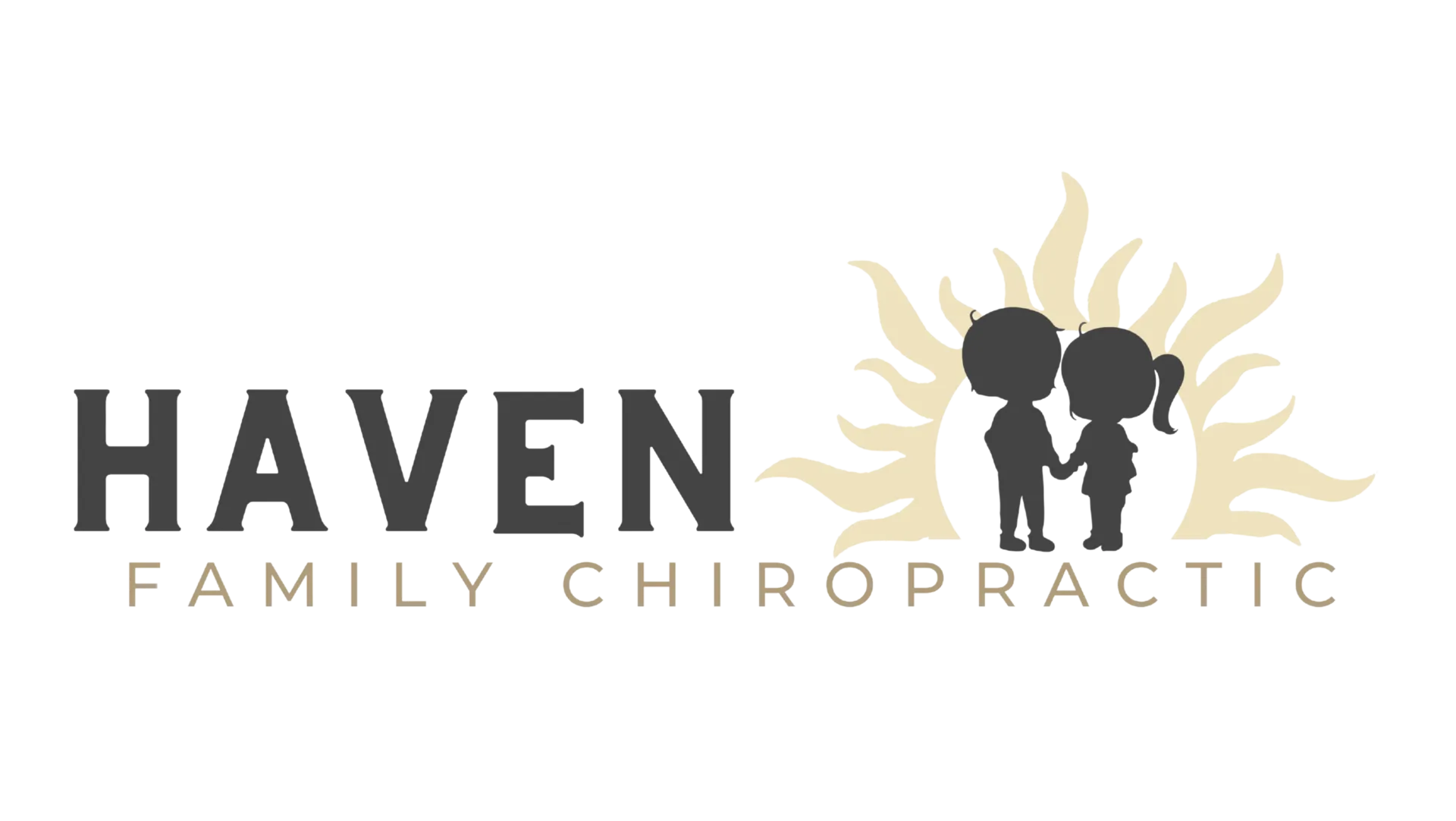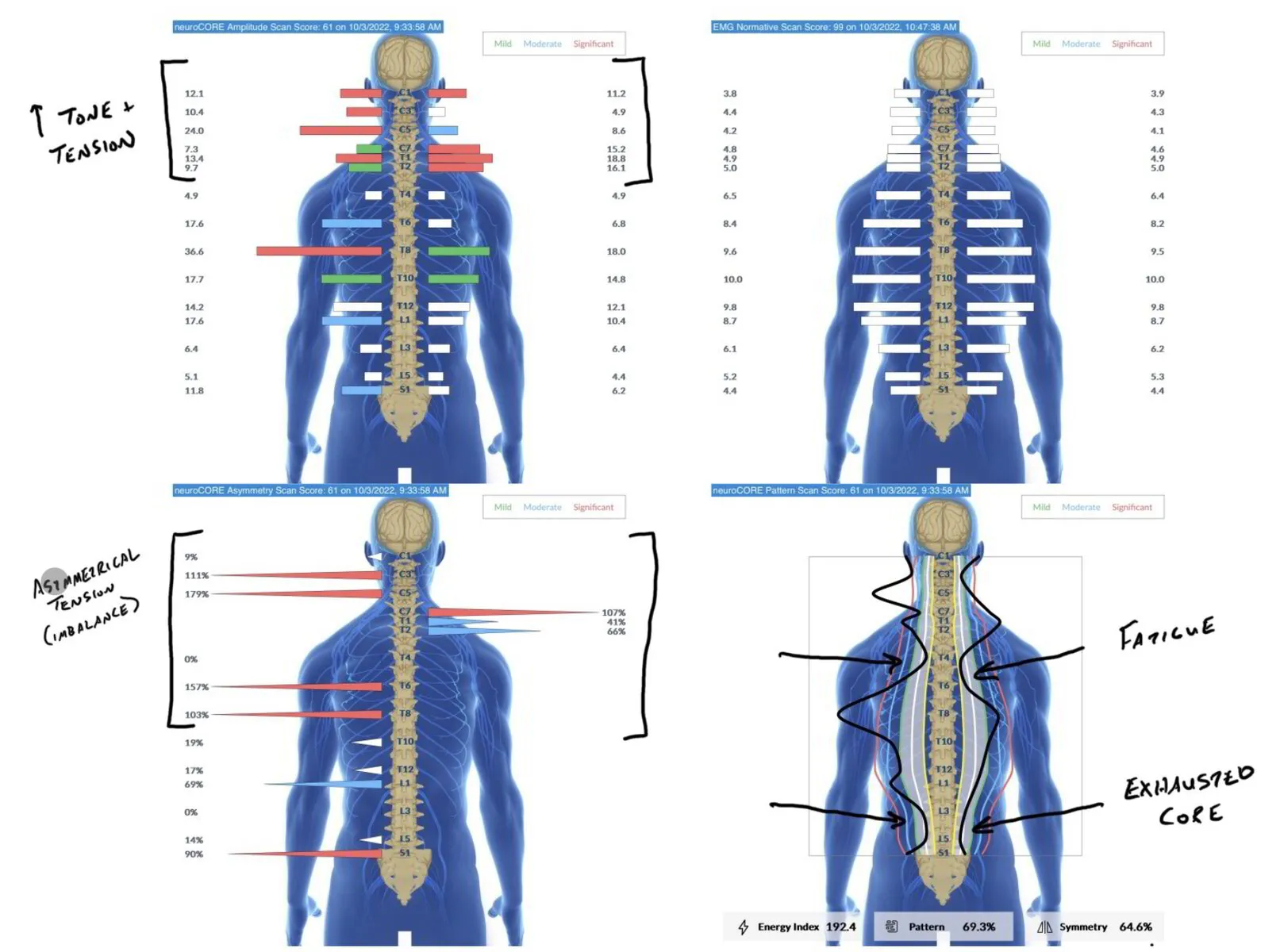WHAT ARE GROSS MOTOR SKILLS?
Gross motor skills are movements that require the entire body and incorporate large muscle groups such as the arms, legs, core, and spine. These movements include sitting upright, walking, running, jumping, climbing, riding a bike, playing sports, etc.
Most pediatric practitioners will focus primarily on how the ‘torso’ or ‘core’ is functioning when they assess a child for gross motor development, but we feel strongly that if we think of more as the spine or even ‘neurospinal’ system, it helps parents + practitioners get a fuller picture of what’s really going on with gross motor skills.
Simply put, before any movement is initiated in the arms or legs, nerves + muscles within the neurospinal system must activate + coordinate first. This is why the spine and the core are perfectly synonymous for this discussion.
Since that is where the core and entire central nervous system is located, it’s important to break down the neurospinal system just a bit further as well, into these 3 main parts:
1. Cervical (neck) region
2. Thoracic (torso) region
3. Lumbopelvic (core) region
And perhaps even more important when sorting out gross motor skills and function, is to talk about the ‘transition zones’ within the neurospinal system, which is where those key regions link up and coordinate together.
Like all motor functions, whether gross or fine motor skills, coordination is essential. If all the nerves and muscles are not communicating with each other in an efficient, coordinated fashion… things don’t develop and function the way they should. More on this later!
WHY ARE GROSS MOTOR SKILLS IMPORTANT?
There are three (3) main reasons why gross motor skills are so important to childhood development and overall health of all kinds. They are:
1. Gross motor skills must develop before fine motor skills
2. Gross motor development is intricately linked to overall brain development and function
3. Gross motor development is also intricately linked to other crucial basic health functions like digestion and immune function
Delays and challenges with gross motor skills will first show up in activities of daily living for young children by causing them to struggle with everyday functions like just getting dressed, getting in and out of bed or the car, navigating their physical environment, and so forth.
Then, later on in life, as the gross motor delays negatively affect brain development, they can lead to problems with sitting up and paying attention in school, playing and interacting with other kids, getting involved in sports and other activities, and more.
And finally, while not discussed as often as they should be in the standard pediatrician or PT/OT world, problems with gross motor skills are absolutely linked to common childhood problems such as chronic ear infections, respiratory infections, and constipation.
WHAT ARE THE GROSS MOTOR SKILLS DEVELOPMENTAL MILESTONES?
Like so many things in pediatric development, the standard charts are not to be taken as an absolute ‘hard line’ cut-off for each and everything listed below because so many kids have their own developmental journeys. But this list will help you determine where your child may be with their current gross motor skills and development.
Newborns-2 months: Turns head from both sides while on back, lifts head and able to turn to both sides while on the belly, performs tummy time on the floor regularly
3-4 months: raises head in line with trunk when pulled to sit, tolerates tummy time well, rolls from belly to back
5 months: rolls from back to belly, brings feet to mouth, laying on back, pivots in a circle while on the belly to each side
6-8 months: sits alone, catches self with loss of balance when sitting, crawls on belly
9-11 months: crawls on hands and knees, walks with two hands held, cruises around furniture
11-12 months: walks with one hand held, stands alone for a few seconds
13-14 months: crawls upstairs, walks alone well, stands up from the floor without support
15-18 months: kicks a ball forward, crawls down the stairs (on the belly, feet first), can run even if they fall easily
2 years: walks up and down stairs alone, walks and runs fairly well, jumps in place with both feet off the ground
3 years: balance on one foot for a few seconds, catches a large ball, rides a tricycle
4 years: Run, jump and climb well, is beginning to skip
5 years: climbs well, begins to skate and swim, rides a bicycle without training wheels
WHAT WOULD STRUGGLES WITH GROSS MOTOR SKILLS LOOK LIKE?
For most children, delays and challenges with gross motor skills are quite readily apparent. Oftentimes the biggest signs are a child that just fatigues extremely easily with even the most basic of physical activities, is always slouched and bent over, and then in time, starts to avoid physical activities altogether.
Even when they are sitting at the table or desk, they will often struggle to sit up and maintain an upright posture. Additionally, when they go to move from one posture to another, it takes a lot of time, a lot of effort, and happens in a very disorganized and inefficient manner.
ADDRESSING GROSS MOTOR DELAYS
The first place a child with gross motor delays is likely to end up is a PT/OT Therapy Center, where traditionally, all the exercises and therapies are designed to activate and strengthen the core.
But while that is still the focus of most traditional practitioners and therapists, for kids with gross motor skills, we frequently find that there is something deeper going on first. And if that first developmental issue is not addressed and taken care of, then their progress and results with PT/OT will be limited and short-lasting.
The inherent challenge we are discussing here is something that affects the ‘tone’ of the gross motor system first – a condition called subluxation. While not yet a common household term, again and again, we find that subluxation is the root issue of so many other gross motor problems.
Keeping it simple, subluxation has two main parts that are both intricately connected to problems with gross motor function:
1. Altered tone + tension (too much + too little)
2. Incoordinate + imbalance
The biggest ‘hidden secret’ to helping kids with gross motor delays is not simply addressing their lack of tone or weak core muscles but actually first addressing the increased and excessive tone found in their neurospinal system, specifically the neck and upper torso regions.
For the most part, only Pediatric Chiropractors are trained to fully analyze and assess tone + tension within the neck and neurospinal system, and that is likely the reason that it’s so overlooked and not taken care of for the vast majority of gross motor development cases.
This is why so many parents report to us that despite many months or years of therapy and working on things as much as they can with stretching + strengthening exercises at home, their child still struggles to make progress and often plateaus with traditional therapies. When that happens, it’s a sure sign that subluxation of the cervical and thoracic spine is the true root cause of the child’s challenges.
The science behind all this is really quite simple. If all of that neuromuscular tone + tension is ‘jammed up’ and ‘stuck’ in the upper regions of the neurospinal system, there simply isn’t enough ‘left over’ to then activate the core, the pelvis, and the arms and legs.
To get an even clearer picture of what’s happening here, let’s look at a case and their EMG (electromyography) Scans below.
The markings and notes made on his INSiGHT Scans tell you everything you need to know about why his posture picture above at the start of this article is the way it is – he was both ‘wound up and worn out’ at the same time. His cervical and thoracic regions had excessive tone + tension, and his neuro-core was weak and exhausted.
LOOK DEEPER WITH THE INSIGHT SCANS
For now, thousands and thousands of parents we’ve been able to help find the answers and action steps they have been looking for all along to help their child get over and past their gross motor delays!
It all starts with doing a neurological assessment that looks deeper than a traditional pediatrician or therapy assessment and really focuses entirely on the central nervous system, spine, and subluxation.
If the challenges discussed in this article sound like your child, then reach out and get scheduled for your 5-Point Clinical Process and INSiGHT Scans today!


